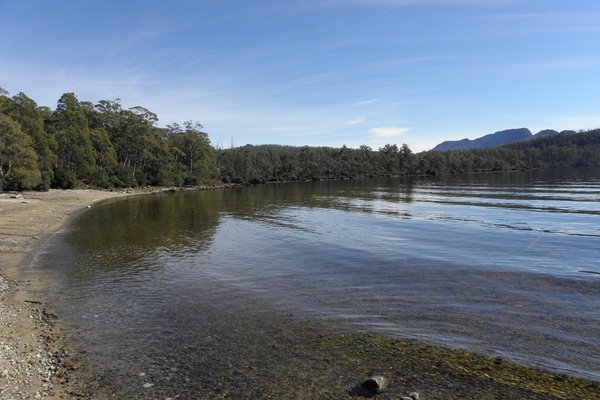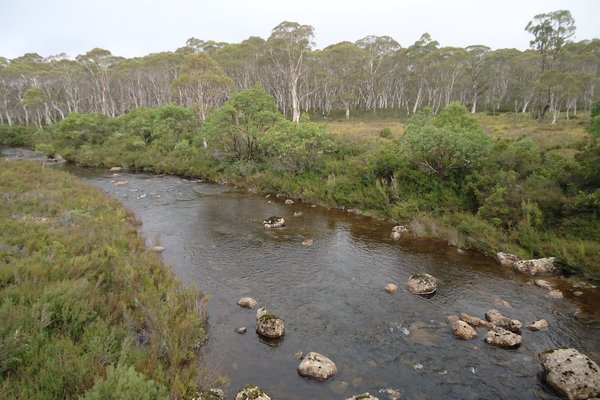Australia
Tasmanian Wilderness
The Tasmanian Wilderness constitutes one of the last expanses of temperate wilderness in the world and a cultural landscape for Tasmanian Aboriginal people.
Tasmanian Aboriginal people have lived here for approximately 40,000 years, of which traces can be found in prehistoric cave sites. Its nature is of exceptional beauty, with various distinctive landforms ranging from the alpine to wetland and coastal ecosystems. It includes some of the longest-lived trees in the world and is home to several marsupial carnivores.
Community Perspective: The lakes of Dove and St. Clair (part of the Cradle Mountain/Lake St. Clair National Park) are the most accessible option for a short visit, and you may spot platypus, wombat and echidna there. Shandos has given an overview of 5 of the included reserves.
Site Info
Official Information
- Full Name
- Tasmanian Wilderness (ID: 181)
- Country
- Australia
- Status
-
Inscribed 1982
Site history
History of Tasmanian Wilderness
- 1989: Name change
- From "Western Tasmania Wilderness National Parks" to "Tasmanian Wilderness"
- 1989: Extended
- To include 2 more national parks (Walls of Jerusalem, Hartz Mountains) and additional areas
- 1982: Advisory Body overruled
- ICOMOS stated "that the elements of the cultural heritage included in the proposal for the Western Tasmania Parks do not, in themselves offer sufficient reason to inscribe this cultural property on the World Heritage List but simply constitute new positive elements which supplement the already favourable report of IUCN" - however it was inscribed on 3 cultural criteria
- 1982: Inscribed
- Inscribed
- Type
- Mixed
- Criteria
- iii
- iv
- vi
- vii
- viii
- ix
- x
Links
- UNESCO
- whc.unesco.org
- Official
-
- parks.tas.gov.au — Tasmanian Wilderness World Heritage Area
All Links
UNESCO.org
- whc.unesco.org — whc.unesco.org/
Official Website
- parks.tas.gov.au — Tasmanian Wilderness World Heritage Area
News Article
- April 6, 2024 pulsetasmania.com.au — Tasmanian wilderness area to close for next phase of mass deer culling program
- Aug. 28, 2023 abc.net.au — UN agency removes assertions Tasmanian Aboriginal people are 'extinct'
- April 7, 2021 news.mongabay.com — Australia’s pivot to plantations may be too late for nearly extinct parrots
- April 28, 2020 theguardian.com — Numbers of critically endangered orange-bellied parrot soar from low 20s to more than 100
- Dec. 26, 2019 theadvocate.com.au — 835 hectares burnt in Tasmanian Wilderness World Heritage area in state's South-West
- Feb. 27, 2019 abc.net.au — Lake Malbena camp proponent flags appeal after council knockback for World Heritage Area plan
- Sept. 4, 2018 abc.net.au — Lake Malbena luxury camping project in Tasmania's wilderness clears federal hurdle
- June 7, 2018 afr.com — Tasmania wants a partner for world-heritage Cradle Mountain facelift
- Nov. 15, 2017 sciencealert.com — Specimens of Earth's Oldest Known Life Forms Have Been Discovered in Tasmania
- Sept. 13, 2016 themercury.com.au — Tasmanian Walking Company’s remote wilderness lodge one step closer to coming to life
- March 20, 2016 reuters.com — Australian government abandons campaign to log Tasmanian forests
- Jan. 23, 2016 theguardian.com — Tasmanian bushfires 'worst crisis in decades' for world heritage forests
- Jan. 15, 2015 theguardian.com — Tasmania plans to open wilderness world heritage area to logging and tourism
- Oct. 15, 2014 au.news.yahoo.com — Councils push for government funding for Cradle Mountain visitor centre
- July 7, 2014 abc.net.au — Controversial Pumphouse Point development underway in Lake St Clair
- June 24, 2014 theguardian.com — UN rejects Australia's 'feeble' bid to strip Tasmanian forest's WH status
- Feb. 4, 2014 news.mongabay.com — Australia proposes removing old-growth forests from World Heritage Site
- June 26, 2013 australiangeographic.com.au — A further 170,000ha of Tasmanian forest have been World Heritage listed
- April 16, 2013 smh.com.au — Beaches of Tasmania's wilderness are being covered with rubbish.
- Feb. 1, 2013 abc.net.au — Tasmanian World Heritage area to be extended by 170 000 hectares
- Jan. 3, 2010 news.smh.com.au — At least eight bushfires are burning in Tasmania's Wilderness World Heritage Area after an electrical storm crossed the state on New Year's Eve
- Sept. 24, 2009 abc.net.au — Tasmania's aboriginal community is angered by a push to expand the state's world heritage area
- April 16, 2008 abc.net.au — Tasmania's on-again, off-again multi-million dollar Pumphouse Point development within the World Heritage Area has been approved.
- Feb. 24, 2007 newswire.co.nz — Eighteen people have been evacuated from a national park in south-west Tasmania as wildfires continue to burn out of control in the world heritage area.
Community Information
- Community Category
- Natural landscape: Forest
- Archaeological site: Prehistoric
Travel Information
Recent Connections
-
Centres of Plant Diversity
Au9 Western Tasmanian Wilderness - "Mos… -
Located in a TCC Territory
Tasmania -
Hand Paintings or Hand Prints
"Red ochre hand stencils, ochre smears,…
Connections of Tasmanian Wilderness
- Geography
-
-
Cape
South West Cape -
Indian Ocean
-
Notable lakes
Lake St. Clair, the "deepest lake in Australia" (IUCN) -
Located at an 'extreme point' of Latitude or Longitude
The Island of Pedra Branca is the southernmost point of Australia excluding sub-Antarctic territories. It is a small island about 26 km (16 mi) south-south-east of South East Cape Tasmania and part of the South West NP
-
- Trivia
-
-
Tourist Treks
Overland TrackSee en.wikipedia.org
-
Dubbed as another WHS
Includes Walls of Jerusalem National Park
-
- History
-
-
Shell Mounds (Middens)
"illustrated through extensive and diverse Holocene shell middens" (Crit iv)
-
- Ecology
-
-
Seagrass beds
"The world’s most southerly and isolated temperate seagrass beds and giant kelp forests occur in Port Davey and Bathurst Harbour" (Crit X) -
Penguins
Little (or "Fairy") -
Rainforests
-
Critically endangered fauna species
Orange-bellied Parrot (20-25 remaining) -
Dripstone
Mole Creek Karst National Park - King Solomons Cave & Marakoopa Cave -
Peat
"Some features, such as striped bogs and peat mounds appear to have characteristics that make them globally unique" (Nom File) -
Eucalypts
extensive tracts of tall eucalypt forest (AB ev) -
Seals
fur seal -
Significant Karst Features
Many small areas of karst in limestone and dolomite, some in alpine zone (AB ev) -
Virgin Forests
See en.wikipedia.org
-
Living Stromatolites
"They were found in freshwater spring mounds in the karstic wetlands of a wilderness area in Tasmania, Australia." (2017)
-
- Damaged
-
-
'Threatened' by Dams
See en.wikipedia.org
-
Meteorite impact
There is a large meteorite impact crater of Pleistocene age in the Andrew River valley of significance on the world scale (UNEP-WCMC)
-
- World Heritage Process
-
-
Sites for which a reduction is or was planned
Proposal by Australian government in 2014 to reduce area by 5% to allow logging. Minor boundary modification was rejected and Australia later abandoned the plan.See www.reuters.com
-
Minor modifications after inscription
2010, 2012, 2013 (to include 21 named adjoining areas that were already under the same management) -
Mixed sites inscribed on 5 or more criteria
Criteria: iii/iv/vi/vii/viii/ix/x. 7 - 3 Cultural, 4 Natural -
Extended
1989: To include 2 more national parks (Walls of Jerusalem, Hartz Mountains) and additional areas -
Inscribed on all 4 Natural criteria
-
- Human Activity
-
-
Hand Paintings or Hand Prints
"Red ochre hand stencils, ochre smears, and other amorphous marks have been found in caves throughout the property" (crit vi) -
Petroglyphs
"Well preserved, diverse rock marking sites and rock shelter sites provide evidence of Aboriginal occupation" (crit iii)
-
- WHS on Other Lists
-
-
Centres of Plant Diversity
Au9 Western Tasmanian Wilderness - "Mosaic landscapes of fire-susceptible and fire-dependent plant communities have formed. These include large, remote, undisturbed areas of Mountain Ash, one of the tallest flowering plants in the world" -
World Heritage Forest Programme
-
Located in a TCC Territory
Tasmania
-
- Timeline
-
-
Late Pleistocene
30,000 BP (earliest occupation)
-
- WHS Names
-
-
Named after individual people
Abel Janszoon Tasman (1603 - October 10, 1659), was a Dutch seafarer, explorer, and merchant.
-
News
- pulsetasmania.com.au 04/06/2024
- Tasmanian wilderness area to close…
- abc.net.au 08/28/2023
- UN agency removes assertions Tasma…
- news.mongabay.com 04/07/2021
- Australia’s pivot to plantations m…
Recent Visitors
Visitors of Tasmanian Wilderness
- Alexander Parsons
- Alex Goh
- alicemears
- Aspasia
- Atila Ege
- BenReeve
- Bill Maurmann
- Bram de Bruin
- Brett Baumann
- CampbellME
- Carlo Sarion
- cflw
- Cheryl
- chiuliqi
- Clyde
- Colossus
- Daniela Hohmann
- eljx1988
- Els Slots
- Fan Yibo
- Gary Arndt
- George Gdanski
- Hdwilsonau
- Hunstow
- Iain Jackson
- Jana
- janem
- Jarek Pokrzywnicki
- Jarrod_Byham
- Jeanne OGrady
- Jens
- Jezza
- Joel on the Road
- Jon Opol
- Jonoprout
- KateY
- KeithBailey
- Kjlauer
- ko9757
- Krijn
- Kurt Lauer
- Lazerway
- leckie118
- Lee Kai Loong
- Liamps91
- Linz
- Little Lauren Travels
- Loic Pedras
- Luis Filipe Gaspar
- lynnz317@aol.com
- Martin
- Michael Ayers
- Michael Novins
- michaelsballard
- Michael Turtle
- Mihai Dascalu
- Milan Jirasek
- MoPython
- Naim Y
- Nicole Lampos
- Nihal Ege
- padisenvacance
- Petteri
- Piotr Wasil
- ReallyDeepThoughts
- Risson
- Rob Wilson
- Roel Sterken
- Roger Ourset
- Roman Bruehwiler
- Rosemary
- sbshipway
- Sclowitz
- Sergio Arjona
- Shandos Cleaver
- Shannon O'Donnell
- stephanvermeulen
- stephhollett
- Stijn
- Sutul
- Tamara Ratz
- Tango
- Thomas Buechler
- Timothy C Easton
- Tom Flaten
- tony0001
- Twobaconsandaboston
- Vanessa Buechler
- _Violeta_
- Wimmy
- Wo_ko
- Yi Han Goh
- Zoë Sheng
Community Reviews
Show full reviews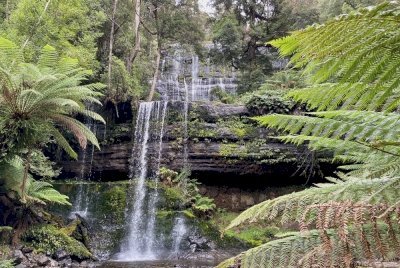
The Tasmanian Wilderness WHS is huge, covering nearly a quarter of the island of Tasmania. Within the WHS are included seven national parks and multiple other conservation areas. The below reviews concentrate mainly on Cradle Mountain-Lake St Claire National Park, which is deservedly a highlight, but I want to share some more ideas for exploring this WHS, based on my three visits to Tasmania over the years.
Mount Field National Park: The easiest part of this WHS to visit from Hobart is actually Mount Field National Park, less than a 2 hour drive from the centre of Hobart. Compared to the other parks it's not that wild, but we still managed to hear quolls when I camped here as a child and took a wildlife walk after dark. The highlight of the park is Russell Falls, easily accessible on a 25 minute flat walk, and still impressive when I revisited in 2020. There's also the longer 6km Three Falls Circuit walk or drive up to the alpine area.
Southwest National Park: This huge national park is 6183 km² in size, over twice the size of Luxembourg! And of course it's entirely roadless. The main way to access the park is on the remote South Coast Track. But for a small taste, you can drive 2 hours south of Hobart to Cockle Creek, where there are camping facilities. It's also the starting point of the 16km return walk to South Cape Bay, which I hiked as a kid with …
Keep reading 0 comments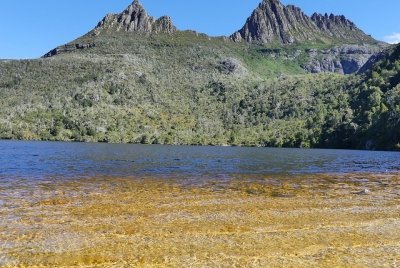
I visited this WHS in January 2018 and spent 4 days in Tasmania exploring by rental car. Of the 8 national parks/state reserves inscribed, I visited Cradle Mountain/Lake St Clair National Park.
It is quite a drive on very good condition winding roads to get there. The only stretch on the heritage highway is littered with speed cams so make sure to respect the speed limit or you'll have an unwanted souvenir. To avoid some of the queues I paid the national park pass for my car online and printed it beforehand. Upon arrival at the Cradle Mountain NP Visitor Centre (which closes at 4pm) and huge parking lot, I registered and I was given my day tickets. A very efficient hop on hop off shuttle service is offered (which runs till 7pm).
The least popular stop is the one at Snake hill which as the name suggests is the best place to encounter some snakes from the boardwalk. It is worth stopping at the Ranger Station for some information on the park and trails. The UNESCO WHS inscription plaque can be found there but is oddly placed as part of the stone benches - so unknowingly people might be sitting on it! A little walk up the street from here is another metal sign displaying WH status and a quiet trail through small waterfalls which leads to the enchanted walk were we saw rabbits, wombats and lots of parakeets.
The last stop is at Dove Lake were there are …
Keep reading 0 comments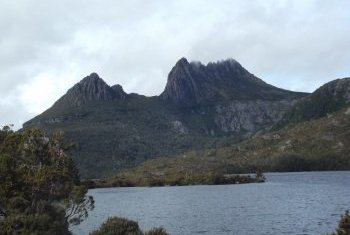
Because of the limited public transport in Tasmania I travelled around the island by campervan. This enabled me to see remote areas of the Tasmanian Wilderness, especially at night when most of the wildlife is out foraging.
At the Cradle Mountain NP I used the Park's shuttlebuses to reach Dove Lake. Here I saw echidna and wombats, as well as a pair of platypus in the shallows of the lake. In the early morning my van was surrounded by wallabies.
From Strahan I took a boat trip up the Gordon River to see the remining stands of Huon Pine in that area.
At Lake St Clair I took a ferry to Narcissus Bay at the northern end of the lake. Here there was some interesting mountain scenery (though nothing as dramatic as in New Zealand's Southern Alps). Wombats and echidnas were common here too.
In the Southwest NP I visited Lake Pedder and the surrounding mountains.
The only Tasmanian Devils I saw were in a reserve near the Port Arthur Convict Settlement.
Keep reading 0 comments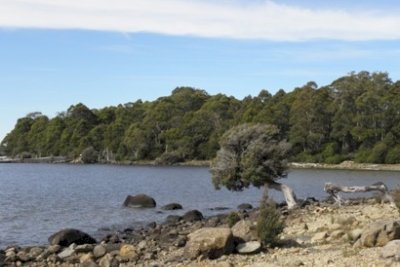
The Tasmanian Wilderness WHS occupies a large part of Tasmania. For a day trip from the Tasman capital of Hobart, Lake St. Clair (part of the Cradle Mountain/Lake St. Clair National Park) is the most accessible option. I rented a car and drove out there in 2.5 hours. It's a fine drive through the island's hilly landscape, with plenty of sheep along the road as well as signboards to watch out for kangaroos, wombats or Tasmanian devils.
I arrived at the visitor center at about 11 a.m. There's a 24 AUS dollar entrance fee (per car) that you have to pay there. And you can take your pick among the many walking tracks in the area. I was looking for a hike of about 3 to 4 hours. The one to Shadow Lake fitted nicely, so it seemed. So after having a quick look at the vast Lake St. Claire, I got going. The track is signposted very well. I did not encounter any other travellers, though there were about 10 cars in the car park. You can do hikes that vary in length from half an hour to 5 days, so it will not get crowded easily on a track.
After walking for about 45 minutes on a small path through the forest, I suddenly realized that I was not enjoying it. There were trees, trees and more trees around me. Most of them are Eucalyptus, common in Australia. No colourful birds, no birds at all except …
Keep reading 0 comments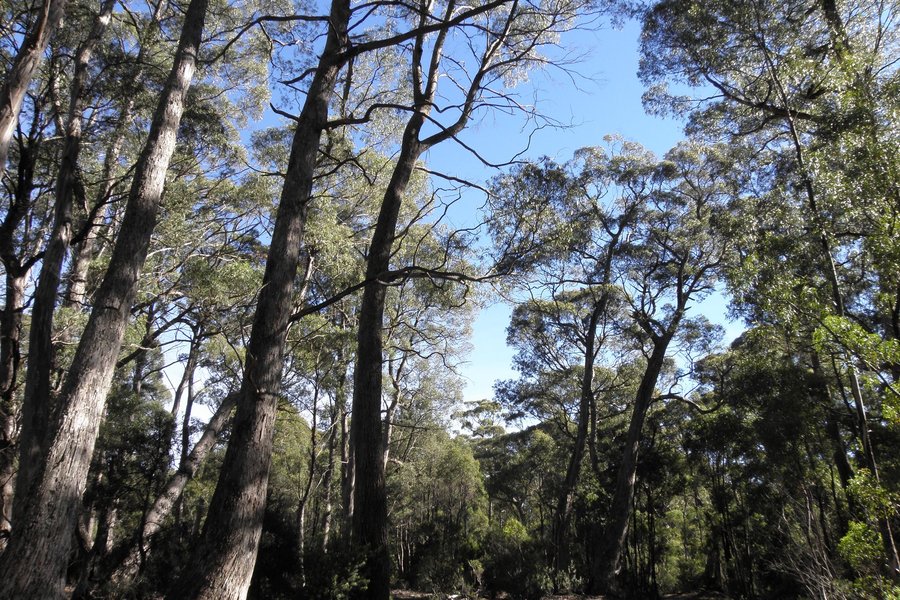
Cradle Mountain is another world!! stunning scenery and wildlife - does not need to change. we went there in winter and had just missed a snowfall but it was still magestic and magical. everyone should go there for peace of mind and to get away from our hectic lifestyles
Keep reading 0 comments
An area of spectacular natural beauty. Easily accessable at Cradle Mountain, and Lake St Claire. The Franklin river is amazing and it is scandelous that there was pressue to flood and destroy it in the 1970's. The flooding of Lake Pedder, which is also part of the World heritage area, was an unbelievable act of government anti environment policy
Keep reading 0 comments
Gorgeous! This must be one of the most beautiful places on the entire planet. The Tasmanians should be very proud of their state. The Overland Track between Cradle Mountain and Lake St. Clair must be one of the finest hikes on Earth. I can't recommend it higher. But, if you do attempt this hike, please be fully prepared. The weather in this part of the world can be absolutely lethal. Oh and also, Tasmania, please STOP THE LOGGING!
Keep reading 0 comments
